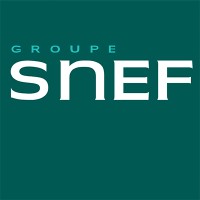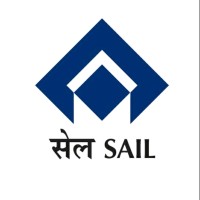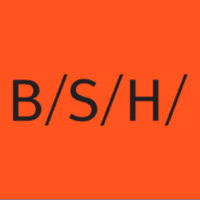Company Cyber Security Posture
NANA
NA Company Details
NA
NA
NA
NA
NA
NA
Scan still pending
NA
NA
Between 200 and 800
This score is AI-generated and less favored by cyber insurers, who prefer the TPRM score.
 NA Global Score
NA Global Score.png)

Company Scoring based on AI Models
| Model Name | Date | Description | Current Score Difference | Score |
|---|---|---|---|---|
| AVERAGE-Industry | 03-12-2025 | This score represents the average cybersecurity rating of companies already scanned within the same industry. It provides a benchmark to compare an individual company's security posture against its industry peers. | N/A | Between 200 and 800 |
Company Cyber Security News & History
| Entity | Type | Severity | Impact | Seen | Url ID | Details | View |
|---|
Company Subsidiaries

NA
Access Data Using Our API

Get company history
.png)
NA Cyber Security News
SWOT Analysis of Patanjali (Updated 2025)
Patanjali has focused on affordable items in the mass market. The company may enter the luxury market by leveraging its natural products and ...
India Cyber Security Services Market Expanding at a CAGR of 13.60% during 2025-2033
India cyber security services market is experiencing robust growth with the increasing digitization of financial and ecommerce transactions.
Patanjali, DS Group buy Magma Insurance at Rs 4,500 crore valuation
India-Business News: Magma General Insurance's board has approved an agreement for Patanjali Ayurved and foundations to acquire a ...
Tata International to nearly double sustainable leather production in 4 yrs
Tata International, the global trading and distribution arm of the Tata Group, on Monday said it plans to increase the production of ...
Power company CESC acquires 64% stake in Purvah Green Power for Rs 205 cr
Post-acquisition, Purvah Green Power Private Limited (Purvah) will become its direct subsidiary, CESC said in a regulatory filing. "The company ...
Andhra Pradesh to build flats for judges, MLAs at Amravati, to introduce subjects on cyber security
The Cabinet today also approved the setting up of a Centre for economic and social studies in Vijayawada for research studies for ST ...
Supreme Court's Contempt Notice To Patanjali: An Analysis
In a significant legal development, the Supreme Court of India has taken a noteworthy step against Patanjali Ayurveda Ltd., ...

NA Similar Companies

SNEF
Group Snef is a French leader in the field of electrical installation and, more broadly, the management of finishing turnkey projects and operations. Group Snef operates in the fields of high- and low-voltage installations, industrial processes, HVAC and maintenance. Its services cover technic

Meghna Group of Industries (MGI)
MGI represents an enterprise and brand with 48 years of national and global experience. It currently operates more than 54 industrial units, houses over 50,000 employees, 6,650 distributors, and 15,000 suppliers under its umbrella, and achieves an annual turnover of approximately $3.0 billion. The

Steel Authority of India Limited
Steel Authority of India Limited (SAIL) traces its origin to the formative years of an emerging nation - India. After independence, the steel sector was to propel the economic growth and rapid industrialization of the country, and since 1973, SAIL steel has played a pivotal role in transforming the

A. O. Smith Corporation
Celebrating its 150th year of business, A. O. Smith is a leading global water technology and manufacturing company that proudly employs more than 12,000 people who together provide water heating and water treatment solutions. The company is headquartered in Milwaukee, Wisconsin, with operations in

General Mills
We exist to make food the world loves. But we do more than that. General Mills is a place that prioritizes being a force for good, a place to expand learning, explore new perspectives and reimagine new possibilities, every day. We look for people who want to bring their best—bold thinkers with big h

BSH Ev Aletleri Türkiye
BSH is home to both globally established Appliance Brands*, such as Bosch, Siemens, Gaggenau, and Neff, in addition to seven local brands. With our Ecosystem Brand Home Connect and Service Brands such as Simply Yummy and BlueMovement, we offer consumers digital services and sustainable solutions to

Frequently Asked Questions
Explore insights on cybersecurity incidents, risk posture, and Rankiteo's assessments.
NA CyberSecurity History Information
How many cyber incidents has NA faced?
Total Incidents: According to Rankiteo, NA has faced 0 incidents in the past.
What types of cybersecurity incidents have occurred at NA?
Incident Types: The types of cybersecurity incidents that have occurred include .
Additional Questions
What Do We Measure?
















Every week, Rankiteo analyzes billions of signals to give organizations a sharper, faster view of emerging risks. With deeper, more actionable intelligence at their fingertips, security teams can outpace threat actors, respond instantly to Zero-Day attacks, and dramatically shrink their risk exposure window.
These are some of the factors we use to calculate the overall score:
Identify exposed access points, detect misconfigured SSL certificates, and uncover vulnerabilities across the network infrastructure.
Gain visibility into the software components used within an organization to detect vulnerabilities, manage risk, and ensure supply chain security.
Monitor and manage all IT assets and their configurations to ensure accurate, real-time visibility across the company's technology environment.
Leverage real-time insights on active threats, malware campaigns, and emerging vulnerabilities to proactively defend against evolving cyberattacks.




